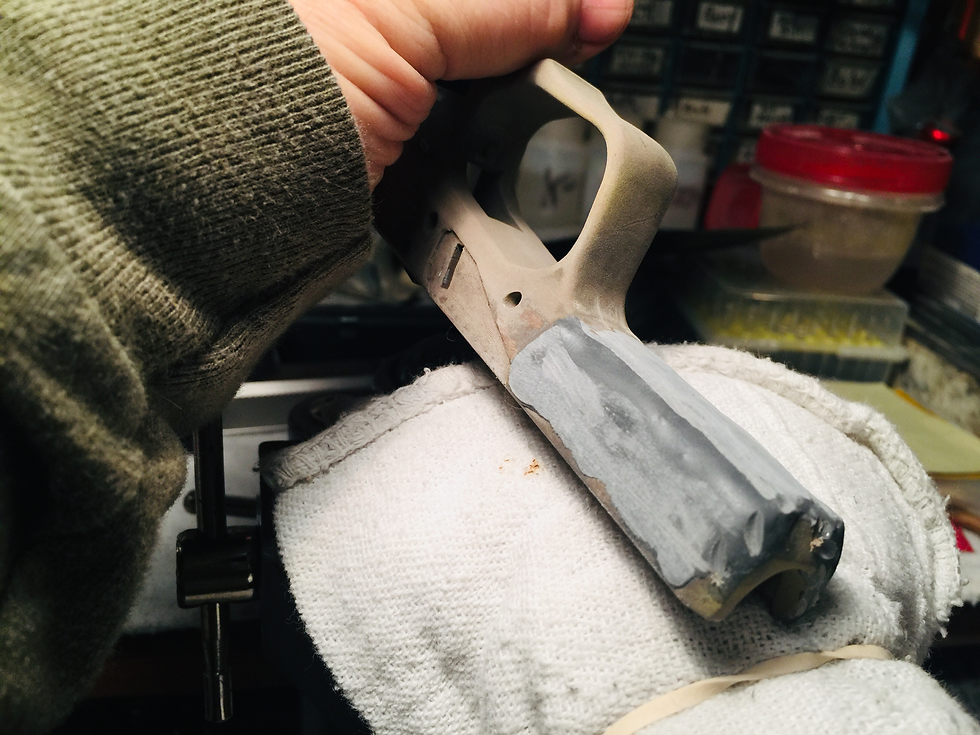I think the vise is the most overlooked tool used or not used, but it's a very important tool if you do a lot of hand work on frames and other small projects. I have made a living doing hand work and have learned a lot of tips on making things easier and the vise plays a big part of that.
The vise holds what you're working on (obviously) but why use one when you can just hold stuff in one hand and tools in the other?
The vise keeps stress off your hands, you will notice this the older you get.
The vise will keep you from bending over to work on stuff
(You know the pain in your neck when you stay bent over for a long time}
I have trained people that didn't learn these basic safety facts and ended up having neck surgery and tendentious in their hands.
So, keep back straight and don't hold parts in your hands for very long periods of time.
Here's my vise:

This is just a small 4 inch 360 vise. I replaced the jaws because I wore them out working on frames.
This is just for small projects I have a different set-up for AR builds
Remember what I said (set your vise up so you keep a straight back)

Here I took out the rubber jaws and added a 2x4 wrapped with a rag. I use this set-up for sanding and shaping, it's a rest to help hold without putting pressure on your hands.
Here you can see how I used this set-up, I'm getting ready for so shaping and sanding putting very little pressure on my hands.

Here is another set-up, small flat work space. It's high enough so my back stays straight.

This set-up is for adding stencils, this way really makes it easy to apply them while you can see what Thay look like.

I use this set-up a lot, I'll put a build here and just stare and stare and come up with a build theme. Then change my mind at least twice or more before I settle in on one theme build.

by Hawkeye » Tue Jun 07, 2022 7:12 pm
This is the rotary hand tool that I use. It's a little bigger than what I liked to use when I worked at the tool shop, but this model has more toque and less speed. I believe this one will top out at 33,000 rpm but the only time you need that speed is with carbide burrs.
1) I keep a box with an assortment of brushes and bobs, some soft and some hard. Used with some rubbing compounds you can save a lot of time getting a high polish without having to use 1500 grit sand paper and up. There are still some metals that will do better with sand paper like aluminum or copper. That is because they are a soft metal and will show dips if you are not very careful with brushes and compound.
2) this unit has a head and a motor that can be removed, with different heads and motor you can set up for an assortment of scenarios. I only have this set up. it's really a all around setup. This unit is very easy to use and not as heavy as a Dremel.
This is the lapping compound I use in most of my first steps after sanding, It has just enough grit to start working scratches out. When you see grit ratings on compounds, it is miss leading. The same sandpaper grit will leave a courser scratch then a compound in the same grit. The jar is just some K-1 kerosene I use to clean off this lapping compound (Its oil based)
1) This is some really cool stuff, diamond compounds in different grits. It is made by using different amounts of diamond dust mixed with ether a water base or a oil base cream. I prefer a oil base it doesn't dry out as fast when used with a different brushes. The cheapest way to go is buy some diamond dust and mix it with mink oil paste like you use to water proof boots.
2) rotary unit again
3) assortment of brushes
Later I will talk out the other hand units this power supply will run.